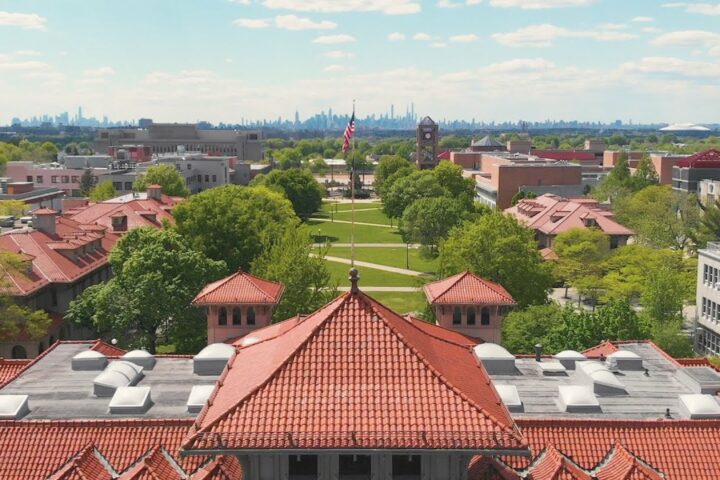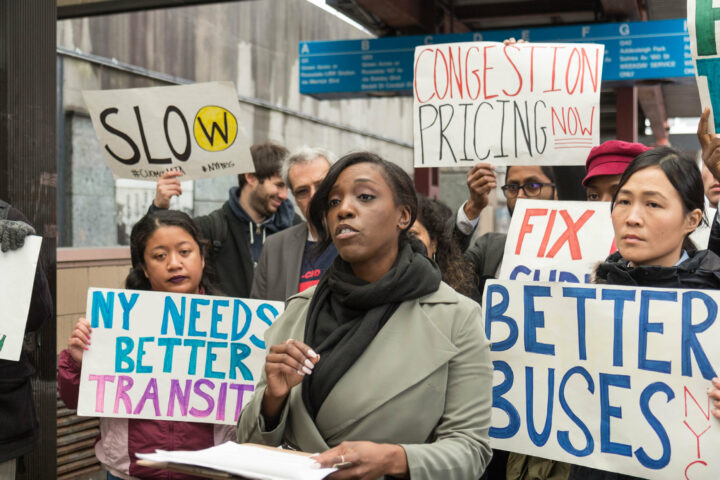Over the past month, one course has been marred with controversy since its first class. Taught by former Gen. David Petraeus, “Are We on the Threshold of the North American Decade?” is a Macaulay Honors course that has 16 students inside of the class and upward to 100 people outside protesting.
Demonstrators have called upon Petraeus to be removed as his past experience does not merit his inclusion in CUNY and Macaulay Honors. CUNY and Macaulay have tolerated the protesters, to an extent.
Interim chancellor of CUNY, William P. Kelly, made a statement over the matter and remarked free speech would be tolerated, but not “the disruption of free exchange of ideas.”
“During the first two weeks of the semester, demonstrators — from within and outside the University — have gathered near the Macaulay Honors College to protest the presence of Visiting Professor David Petraeus,” Kelly said. “By nature, universities nurture the reasoned expression of dissent, including the right of peaceful protest. CUNY has long embraced the responsibility to encourage debate and dialogue.”
On Sept. 9, a group of students followed Petraeus as he left his class and confronted him about his past. The students can be seen shouting at Petraeus, stating he was a “war criminal” in a YouTube video, titled “CUNY Students Confront War Criminal Petraeus,” which has over 338,000 views as of this writing.
Dean Ann Kirschner, from CUNY Macaulay Honors, wrote a letter, released on Sept. 12 on the Macaulay website, which disagreed with what the individuals in the video did.
“Harassment and abusive behavior toward a faculty member are antithetical to the university’s mission of free and open dialogue. Although this may be obvious, this kind of behavior strikes more deeply at the heart of our cherished American right to express our beliefs without threats or fear of retribution,” she said.
Patryk Perkowski, a Queens College and Macaulay Honors student in Petraeus’ course, did support the students’ right to protest and remarked “they have every right” to do it. However, he did not agree with what occurred after the first day of class.
“I thought that went a little too far. I want our university to be seen as a space to debate ideas and not just harass those we see on the street. I didn’t think that did much to create good discourse,” he said.
The ad hoc committee against the militarization of CUNY is the main group organizing the protests outside of Petraeus’ class. Students without Borders, a QC club and part of the ad hoc committee, questioned the significance of Petraeus in CUNY.
In a statement released to The Knight News, they said they were against Petraeus and the Reserve Officers Training Corps. They did not want the “militarization of CUNY” occurring with students in mind, without a pushback.
“He represents one half of a two-pronged siege of CUNY academics in which he trains the ideological front through his seminar, while his ROTC counterpart recruits operational forces throughout our campuses,” the statement said.
On Sept. 16, protestors outside of a fundraising event for Petraeus were faced with heavy police presence. The fundraiser featured Mayor Michael Bloomberg as guest and CNN’s Fareed Zakaria as the host.
When protestors marched in the street, an incident occurred between a demonstrator and an officer. As a result, officers ran into the streets and attempted to arrest the person. Other students were then arrested and beaten by police, with one student having been kneed in the back numerous times while arrested.
The six individuals, referred to as the CUNY 6, were charged with disorderly conduct, riot, resisting arrest and obstruction of government authority. They were held in court the next day after being held for more than 20 hours without charge. They were later released, but are required to return to court as they may face jail time.
Kevin Gosztola, journalist with The Dissenter and expert on civil liberties, spoke on the significance of the charges in question.
“These charges, with the exception of the ‘obstruction of governmental authority,’ are what one could call Occupy offenses. The charges are what a person exercising their freedom of speech and assembly can face if they are targeted by the NYPD for arrest, which if one watches video of the arrests, is what appears to have happened to at least one of the students,” he said.
Macaulay Honors director of communications, Grace Rapkin, who spoke for both CUNY and Macaulay, did not have any comment regarding the case and directed answers to Manhattan District Attorney Cyrus Vance Junior.
Journalist Steve Horn has been covering the protests on The Dissenter and commented upon what happened to the CUNY 6 and the movement itself.
“Any movement that fundamentally challenges the socio-economic status quo will be met with repression like this and this wasn’t even very harsh repression in the big scheme of things,” Horn said.
Luis Henriques, a QC student and one of those arrested, was not surprised such an event would occur outside of a CUNY-supported fundraiser.
“It’s something to be expected. The status of the police is to protect the status quo. If you are against the status, then they’re going come after you,” he said.
The course was moved to another location for reasons not cited by CUNY or Macaulay Honors. It is now held at 555 West 57th Street.
Jesse Marcus, a QC student and member within the ad hoc committee against the militarization of CUNY, commented on the significance of such a change by CUNY and Macaulay.
“I think that it’s definitely a gain,” he said.”It’s somewhat of a retreat from those who are behind making this class a possibility. I don’t think I would go far in saying it’s a victory, because there are more steps from removing him from CUNY.”
Perkowski stated that he felt there “was nothing we could do to prevent him from coming” to Macaulay. He did note that “not all the students in the class agreed with Petraeus and what he’s done,” but felt there was an opportunity to engage him with different viewpoints.
“Instead of preventing him from coming here, we could influence his time here. We could influence his time with the students. The students [in the protests] are doing that through different avenues,” he said.













